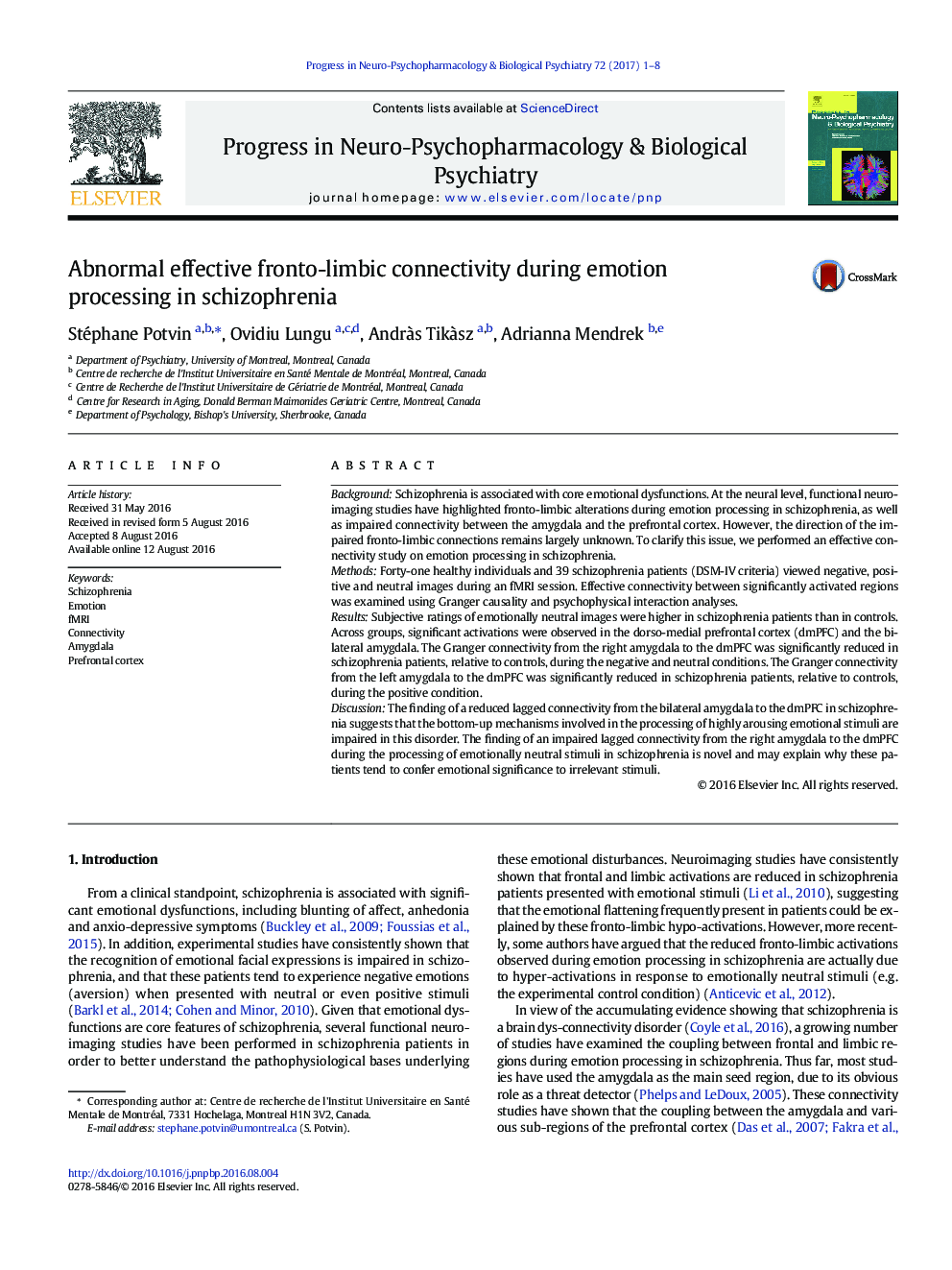| Article ID | Journal | Published Year | Pages | File Type |
|---|---|---|---|---|
| 2564617 | Progress in Neuro-Psychopharmacology and Biological Psychiatry | 2017 | 8 Pages |
•Activations in the dmPFC and the amygdala (AMG) during emotion processing were observed across groups.•Connectivity from the right AMG to the dmPFC was significantly reduced in schizophrenia patients during negative conditions.•Connectivity from the left AMG to the dmPFC was significantly reduced in schizophrenia patients during positive conditions.•Bottom-up mechanisms involved in the processing of highly arousing emotional stimuli are impaired in schizophrenia patients.
BackgroundSchizophrenia is associated with core emotional dysfunctions. At the neural level, functional neuro-imaging studies have highlighted fronto-limbic alterations during emotion processing in schizophrenia, as well as impaired connectivity between the amygdala and the prefrontal cortex. However, the direction of the impaired fronto-limbic connections remains largely unknown. To clarify this issue, we performed an effective connectivity study on emotion processing in schizophrenia.MethodsForty-one healthy individuals and 39 schizophrenia patients (DSM-IV criteria) viewed negative, positive and neutral images during an fMRI session. Effective connectivity between significantly activated regions was examined using Granger causality and psychophysical interaction analyses.ResultsSubjective ratings of emotionally neutral images were higher in schizophrenia patients than in controls. Across groups, significant activations were observed in the dorso-medial prefrontal cortex (dmPFC) and the bilateral amygdala. The Granger connectivity from the right amygdala to the dmPFC was significantly reduced in schizophrenia patients, relative to controls, during the negative and neutral conditions. The Granger connectivity from the left amygdala to the dmPFC was significantly reduced in schizophrenia patients, relative to controls, during the positive condition.DiscussionThe finding of a reduced lagged connectivity from the bilateral amygdala to the dmPFC in schizophrenia suggests that the bottom-up mechanisms involved in the processing of highly arousing emotional stimuli are impaired in this disorder. The finding of an impaired lagged connectivity from the right amygdala to the dmPFC during the processing of emotionally neutral stimuli in schizophrenia is novel and may explain why these patients tend to confer emotional significance to irrelevant stimuli.
